Answered step by step
Verified Expert Solution
Question
1 Approved Answer
INTRODUCTION TO COMPUTER NETWORKS Q1. From this network diagram answer the following questions: Printer-PT Printer 192.168.35.0/24 192.168.15.0/24 WSTJON Wireless guter Laptop-PT Laptop2 2011 10.30.1.0/30
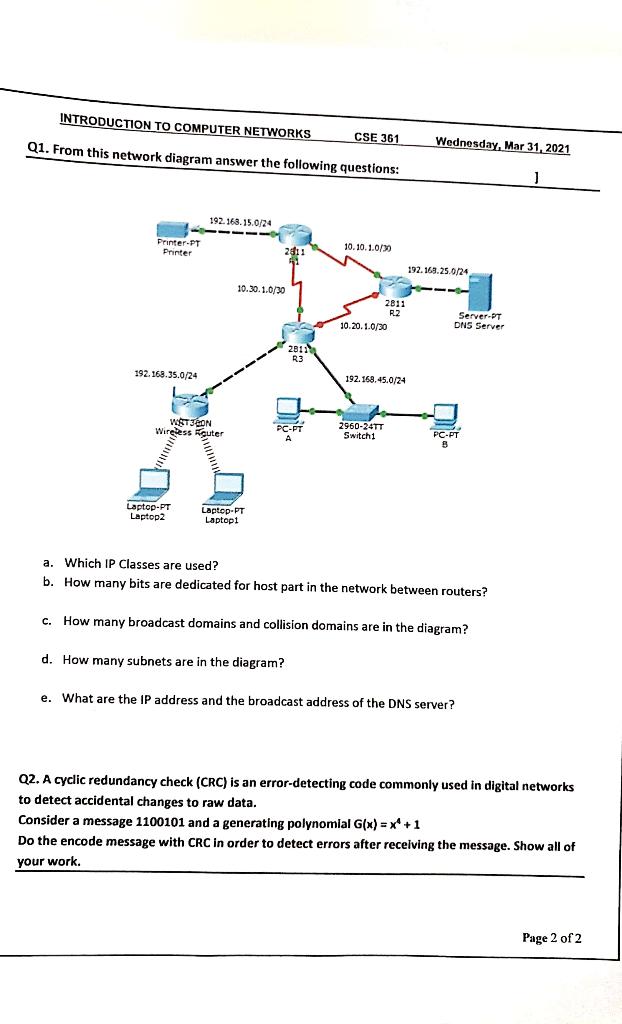
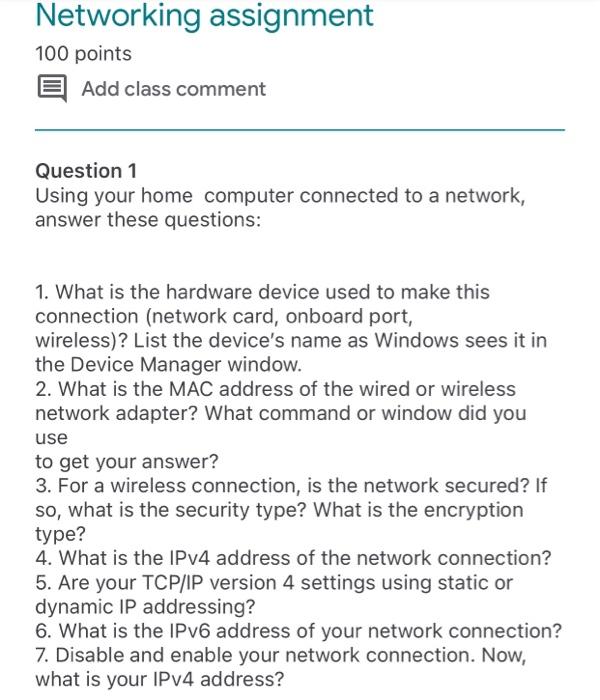
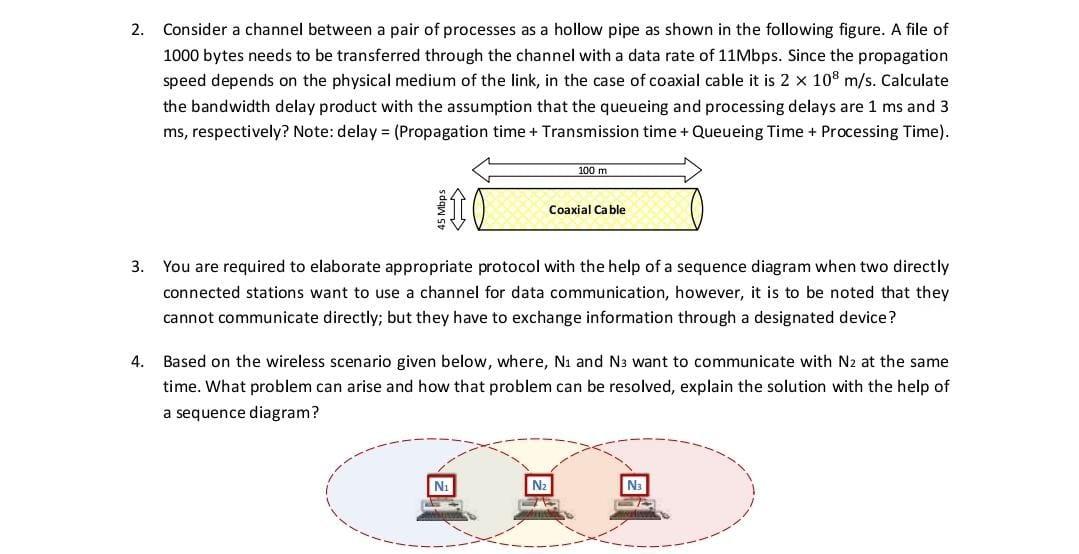
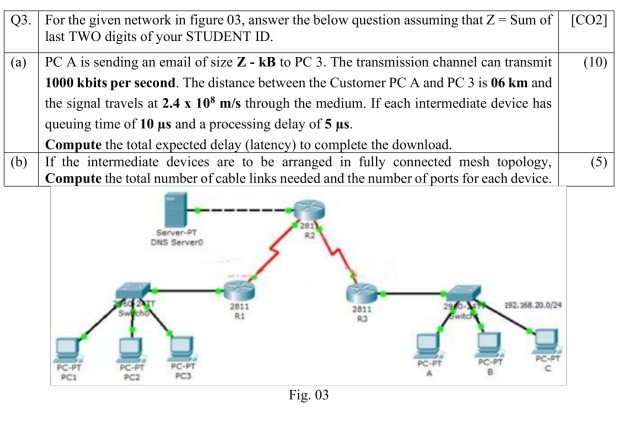
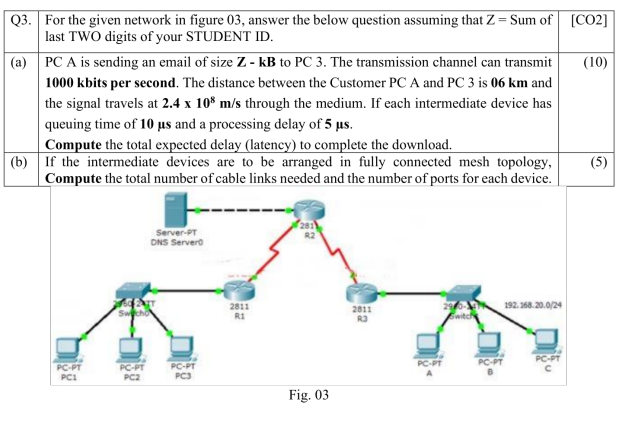
INTRODUCTION TO COMPUTER NETWORKS Q1. From this network diagram answer the following questions: Printer-PT Printer 192.168.35.0/24 192.168.15.0/24 WSTJON Wireless guter Laptop-PT Laptop2 2011 10.30.1.0/30 Laptop-PT Laptop1 2811 R3 PC-PT A d. How many subnets are in the diagram? CSE 361 10.10.1.0/30 2811 R2 10.20.1.0/30 192.168.45.0/24 2960-24TT Switch1 Wednesday, Mar 31, 2021 ] 192.168.25.0/24 Server-PT DNS Server PC-PT B a. Which IP Classes are used? b. How many bits are dedicated for host part in the network between routers? c. How many broadcast domains and collision domains are in the diagram? e. What are the IP address and the broadcast address of the DNS server? Q2. A cyclic redundancy check (CRC) is an error-detecting code commonly used in digital networks to detect accidental changes to raw data. Consider a message 1100101 and a generating polynomial G(x)=x^+1 Do the encode message with CRC in order to detect errors after receiving the message. Show all of your work. Page 2 of 2 Networking assignment 100 points Add class comment Question 1 Using your home computer connected to a network, answer these questions: 1. What is the hardware device used to make this connection (network card, onboard port, wireless)? List the device's name as Windows sees it in the Device Manager window. 2. What is the MAC address of the wired or wireless network adapter? What command or window did you use to get your answer? 3. For a wireless connection, is the network secured? If so, what is the security type? What is the encryption type? 4. What is the IPv4 address of the network connection? 5. Are your TCP/IP version 4 settings using static or dynamic IP addressing? 6. What is the IPv6 address of your network connection? 7. Disable and enable your network connection. Now, what is your IPv4 address? 2. 3. 4. Consider a channel between a pair of processes as a hollow pipe as shown in the following figure. A file of 1000 bytes needs to be transferred through the channel with a data rate of 11Mbps. Since the propagation speed depends on the physical medium of the link, in the case of coaxial cable it is 2 x 108 m/s. Calculate the bandwidth delay product with the assumption that the queueing and processing delays are 1 ms and 3 ms, respectively? Note: delay = (Propagation time + Transmission time + Queueing Time + Processing Time). 100 m Coaxial Cable You are required to elaborate appropriate protocol with the help of a sequence diagram when two directly connected stations want to use a channel for data communication, however, it is to be noted that they cannot communicate directly; but they have to exchange information through a designated device? Based on the wireless scenario given below, where, N and N3 want to communicate with N2 at the same time. What problem can arise and how that problem can be resolved, explain the solution with the help of a sequence diagram? Q3. For the given network in figure 03, answer the below question assuming that Z = Sum of [CO2] last TWO digits of your STUDENT ID. (10) (a) PC A is sending an email of size Z- kB to PC 3. The transmission channel can transmit 1000 kbits per second. The distance between the Customer PC A and PC 3 is 06 km and the signal travels at 2.4 x 108 m/s through the medium. If each intermediate device has queuing time of 10 s and a processing delay of 5 s. Compute the total expected delay (latency) to complete the download. (b) If the intermediate devices are to be arranged in fully connected mesh topology, Compute the total number of cable links needed and the number of ports for each device. PC-PT PC1 Swicho PC-PT PC2 Server-PT ONS Servero PC-PT PC3 2811 R1 Fig. 03 2811 R3 PC-PT 192.168.20.0/24 PC-PT (5) Q3. For the given network in figure 03, answer the below question assuming that Z = Sum of [CO2] last TWO digits of your STUDENT ID. (10) (a) PCA is sending an email of size Z - kB to PC 3. The transmission channel can transmit 1000 kbits per second. The distance between the Customer PC A and PC 3 is 06 km and the signal travels at 2.4 x 108 m/s through the medium. If each intermediate device has queuing time of 10 s and a processing delay of 5 s. Compute the total expected delay (latency) to complete the download. (b) If the intermediate devices are to be arranged in fully connected mesh topology, Compute the total number of cable links needed and the number of ports for each device. PC-PT PC1 Swicho PC-PT PC2 Server-PT DNS Servero PC-PT PC3 2811 R1 Fig. 03 2811 R3 PC-PT 192.168.20.0/24 PC-PT (5)
Step by Step Solution
There are 3 Steps involved in it
Step: 1

Get Instant Access to Expert-Tailored Solutions
See step-by-step solutions with expert insights and AI powered tools for academic success
Step: 2

Step: 3

Ace Your Homework with AI
Get the answers you need in no time with our AI-driven, step-by-step assistance
Get Started


